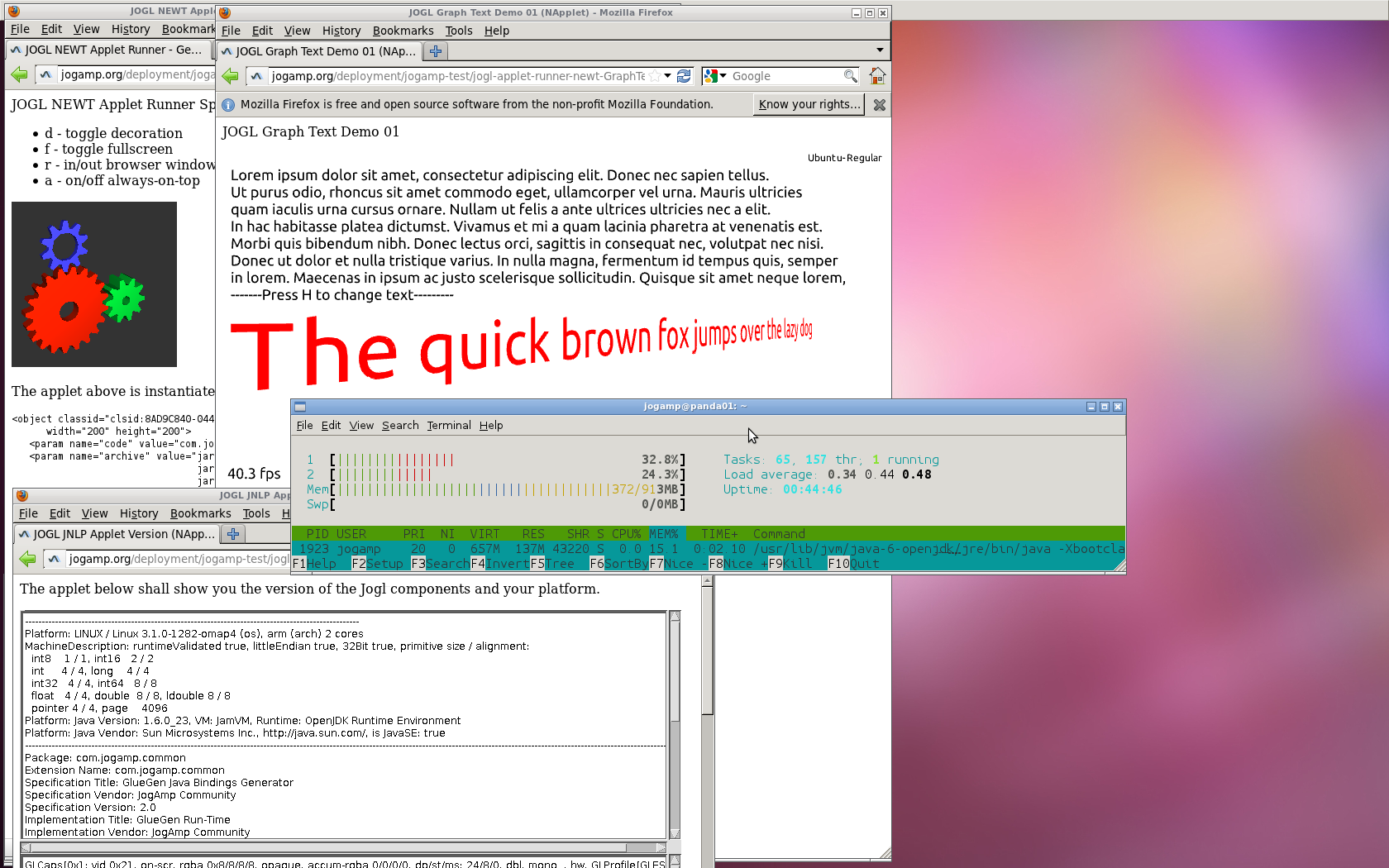Besides adding proper Mac OS X support (10.5.8 – 10.7.*, incl. OpenJDK7),
OpenGL 4.2 and latest EGL, ES1 and ES2 extension updates and lot’s of stabilization’s,
Xerxes Rånby and myself worked on a proper Linux ARMv7 support.
Both were able to test on Omap4 (Pandaboard ES), Tegra2 (AC100), where Xerxes also tested on other machines, eg. Nokia N9 MeeGo.
Even though GlueGen and JOGL in general support EGL and ES1/ES2 since 2008 incl. the GL profile selection,
we figured we need better support for multiple GL implementations on one platform, Mesa3D software and the hardware EGL/ES ones.
Without tweaking your default configuration, JOGL chooses the right implementation for the desired profile,
e.g. hardware accelerate GLES2 for the desired common GL2ES2 profile on your mobile device, even though Mesa is installed.
Besides tiny big fixes and workarounds the biggest amount of work was to attach the Linux ARMv7 job to Jenkins.
We use a cross-compile and cross-test environment, where the build host cross-compiles and makes the Pandaboard ES
fetch the artifacts via rsync and execute the tests. Later the build host pulls the results and forwards them to the Jenkins master.
All JogAmp modules are now build for Linux-Armv7,
a test release is made available here.
You may like to try the test Applets.
Note: This week RC6 will be released under the usual location and the above test URL will cease to exist.
I dared to test browser support via OpenJDK and the IcedTea Plugin,
and for some reason .. it just works 🙂
Please feel welcome to join the discussion.
